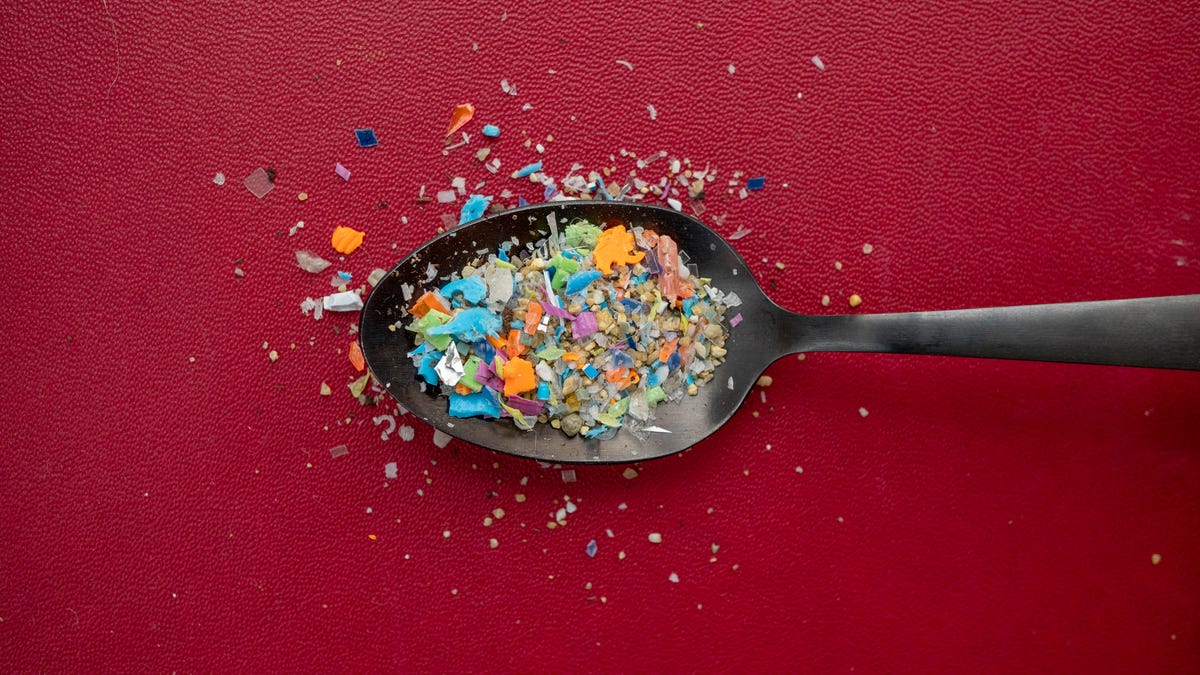URGENT UPDATE: New studies reveal alarming levels of microplastics lurking in kitchens, posing significant health risks. Research from February 2025 indicates that these tiny plastic particles are not just environmental hazards; they may be entering our bodies through everyday kitchen items.
Microplastics, defined as plastic particles smaller than 5 millimeters, are now found in our food, water, and air. Scientists estimate that humans inhale approximately 22 million micro and nanoplastics annually. The implications are dire: recent studies suggest a troubling correlation between microplastic exposure and health issues, including heart attacks and strokes.
A concerning finding from researchers at Spain’s Autonomous University of Barcelona reveals that a single plastic tea bag can release billions of microplastic particles during brewing. This raises urgent questions about the safety of common kitchen items. If you thought your Teflon-coated cookware was safe, think again. Australian researchers have found that such cookware can leach thousands, even millions, of microplastics into your food, especially when damaged.
Why This Matters NOW: The health implications of microplastics are staggering. Recent studies show microplastics found in brain tissues of dementia patients, with concentrations up to 10 times higher than in non-dementia patients. This urgent research prompts a reevaluation of what we use in our kitchens.
Microplastics are not just a theoretical concern; they can lead to serious health problems, including tissue inflammation and oxidative damage. The growing presence of these particles in our food supply makes it imperative to take action now.
Where Microplastics Hide in Your Kitchen:
1. **Cookware**: Teflon and other nonstick surfaces can release microplastics during cooking.
2. **Takeout Containers**: Many reusable plastic containers leach harmful particles when heated.
3. **Plastic Utensils**: Studies show that when exposed to heat, plastic utensils can release microplastics into food.
4. **Tea Bags**: Brewing tea in plastic bags can release billions of microplastics with each cup.
5. **Spice Containers**: Many spices are packaged in plastic, raising the risk of contamination.
Immediate Steps to Reduce Exposure:
– **Upgrade Cookware**: Switch to stainless steel or cast iron pans.
– **Avoid Plastic Utensils**: Use wooden or stainless steel utensils instead.
– **Choose Glass**: Opt for glass or ceramic containers for food storage.
– **Switch Tea Methods**: Use loose tea leaves with a stainless steel infuser.
– **Ditch Plastic Straws**: Replace them with reusable metal or bamboo options.
As awareness grows, many consumers are taking proactive steps to reduce their exposure to microplastics in the kitchen. By making simple changes, you can protect your health and contribute to a cleaner environment.
What’s Next: Keep an eye on ongoing research regarding microplastics and their health effects. As new data emerges, it will be crucial to stay informed about safe kitchen practices.
The bottom line is clear: microplastics are infiltrating our kitchens and, ultimately, our bodies. With the evidence mounting, the time to act is now. Share this information widely to ensure everyone understands the risks and can take steps to protect their health.
